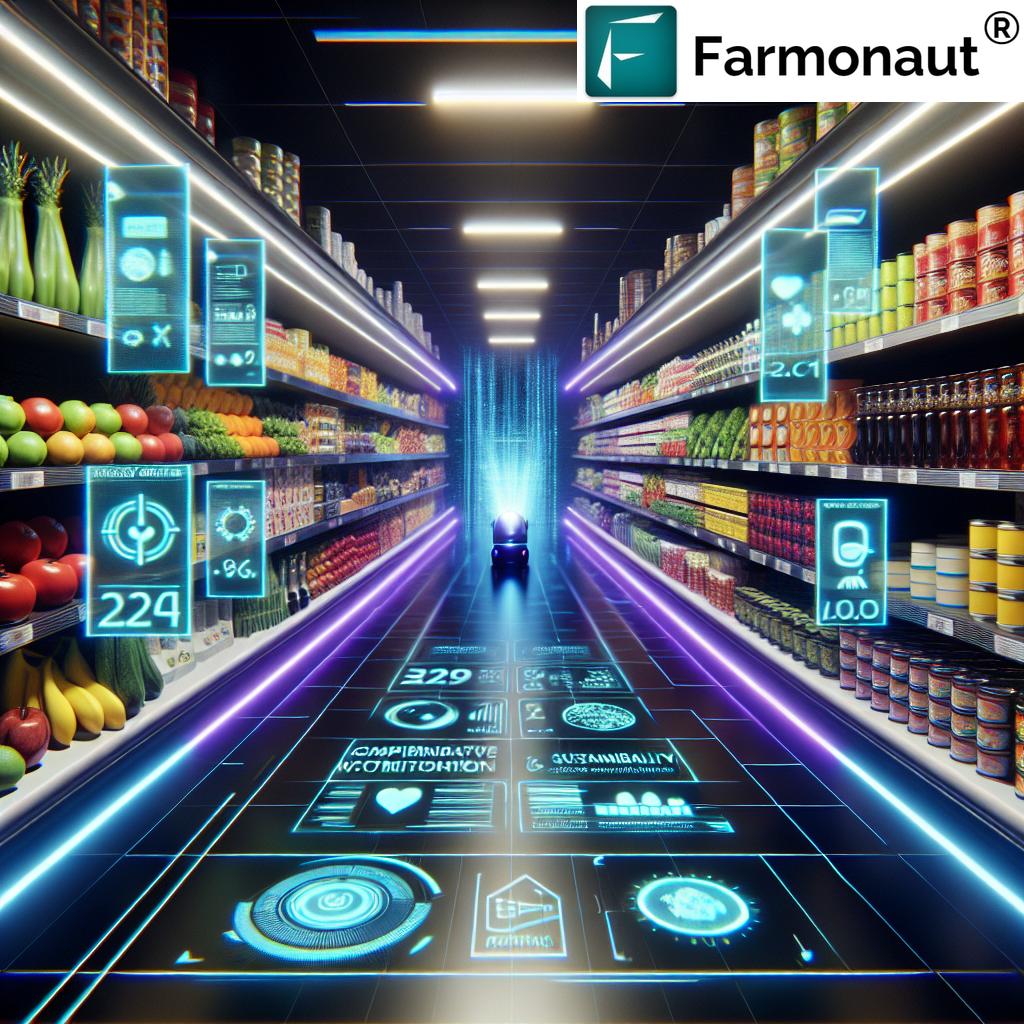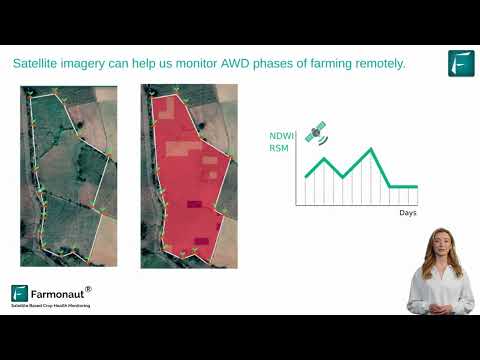2024 Food Industry Trends: Optimizing Retail Distribution and B2B Sales Strategies for Success
“70% of food brands are expected to increase their CRM tool usage in 2024 to optimize B2B sales strategies.”
Welcome to our comprehensive blog on the critical food industry trends shaping 2024 and beyond. As we navigate the ever-evolving landscape of retail distribution and B2B sales, it’s crucial for food brands to stay ahead of the curve. In this post, we’ll dive deep into the strategies that will drive success in the competitive grocery aisle and optimize your brand’s performance.

Emerging Food Industry Trends for 2024
As we approach 2024, the food industry is witnessing a rapid transformation driven by changing consumer preferences, technological advancements, and global economic shifts. Let’s explore the key trends that will shape the industry:
- Sustainability Focus: Consumers are increasingly demanding eco-friendly products and packaging.
- Plant-Based Revolution: The rise of plant-based alternatives is reshaping product offerings.
- Digital Integration: E-commerce and digital platforms are becoming essential for food brands.
- Personalized Nutrition: Tailored dietary solutions are gaining traction among health-conscious consumers.
- Transparent Supply Chains: Consumers want to know the journey of their food from farm to table.
These trends are not just passing fads; they’re reshaping the entire food industry landscape. As we delve deeper into each trend, we’ll explore how they impact retail distribution strategies and B2B sales optimization.
Optimizing Retail Distribution Strategies
In the competitive world of food retail, having a robust distribution strategy is crucial. Here’s how brands can optimize their approach:
- Leverage Data Analytics: Utilize big data to predict demand and optimize inventory levels.
- Embrace Omnichannel Distribution: Integrate online and offline channels for a seamless customer experience.
- Implement Efficient Logistics: Streamline supply chain processes to reduce costs and improve delivery times.
- Collaborate with Retailers: Foster strong partnerships to secure prime shelf space and promotional opportunities.
By focusing on these areas, food brands can enhance their presence in the retail space and improve their bottom line.
B2B Sales Optimization: Strategies for Success
In the B2B realm, sales optimization is key to driving growth. Here are some strategies to boost your B2B sales:
- Implement Effective Call Cycles: Develop a structured approach to client interactions.
- Utilize CRM Tools: Leverage customer relationship management software to track and nurture leads.
- Personalize Your Approach: Tailor your sales pitch to each client’s unique needs and challenges.
- Offer Value-Added Services: Differentiate your brand by providing additional support and expertise.
By adopting these strategies, food brands can strengthen their B2B relationships and drive sales growth.
“Effective call cycles can boost product shelf positioning by up to 25% in competitive grocery aisles.”
Understanding Consumer Food Preferences
To succeed in the food industry, brands must stay attuned to evolving consumer preferences. Here are the key trends shaping consumer choices:
- Health and Wellness: Consumers are seeking nutritious, functional foods that support overall well-being.
- Convenience: Ready-to-eat and easy-to-prepare options are in high demand.
- Ethical Sourcing: Consumers want products that align with their values, including fair trade and animal welfare.
- Flavor Innovation: Unique and global flavors are attracting adventurous consumers.
By aligning product offerings with these preferences, brands can capture market share and build customer loyalty.
The Role of Technology in Food Brand Growth
Technology is playing an increasingly vital role in the success of food brands. Here’s how tech is driving growth:
- AI-Powered Analytics: Artificial intelligence is helping brands make data-driven decisions.
- Blockchain for Traceability: Enhancing supply chain transparency and food safety.
- IoT in Production: Internet of Things devices are optimizing manufacturing processes.
- Augmented Reality Marketing: Creating immersive product experiences for consumers.
Embracing these technologies can give food brands a competitive edge in the market.
At Farmonaut, we’re at the forefront of technological innovation in agriculture. Our satellite-based farm management solutions and AI-driven advisory systems are helping farmers optimize crop yields and reduce resource wastage. Learn more about our advanced technologies:
Navigating the Distribution Dilemma
One of the biggest challenges food brands face is the distribution dilemma. How can you ensure your products reach the right retailers and consumers efficiently? Here are some strategies to consider:
- Direct-to-Consumer (D2C) Channels: Explore opportunities to sell directly to consumers through e-commerce platforms.
- Strategic Partnerships: Collaborate with complementary brands to expand distribution networks.
- Localized Distribution: Tailor distribution strategies to regional preferences and market conditions.
- Sustainable Distribution: Implement eco-friendly practices to appeal to environmentally conscious consumers and retailers.
By addressing these distribution challenges, food brands can improve their market reach and operational efficiency.

Effective Call Cycles in Retail
Implementing effective call cycles is crucial for success in B2B sales within the food industry. Here’s how to optimize your approach:
- Frequency: Determine the optimal frequency of interactions with each customer.
- Sequence: Plan the order of customer visits to maximize efficiency.
- Preparation: Research and prepare for each interaction to deliver value.
- Follow-up: Consistently follow up on commitments and action items.
By implementing a structured call cycle strategy, food brands can improve their relationships with retailers and boost sales performance.
Leveraging CRM Tools for Food Brands
Customer Relationship Management (CRM) tools are essential for food brands looking to optimize their B2B sales strategies. Here’s how CRM can benefit your brand:
- Customer Insights: Gain a deeper understanding of your clients’ needs and preferences.
- Sales Forecasting: Use data to predict future sales trends and optimize inventory.
- Streamlined Communications: Centralize customer interactions for better follow-up and service.
- Performance Tracking: Monitor sales team performance and identify areas for improvement.
Investing in a robust CRM system can significantly enhance your brand’s B2B sales capabilities.
The Importance of Shelf Positioning
In the competitive grocery aisle, shelf positioning can make or break a product’s success. Here are key factors to consider:
- Eye-Level Placement: Aim for positioning at eye level, where products are most likely to be noticed.
- Product Grouping: Strategically place products near complementary items to encourage multiple purchases.
- End-Cap Displays: Negotiate for prime end-cap positions for promotional items.
- Category Management: Work with retailers to optimize overall category performance.
By focusing on optimal shelf positioning, food brands can significantly boost their visibility and sales in retail environments.
Food Industry Logistics: Optimizing the Supply Chain
Efficient logistics are crucial for success in the food industry. Here’s how brands can optimize their supply chain:
- Real-Time Tracking: Implement technologies for end-to-end visibility of product movement.
- Inventory Management: Use predictive analytics to optimize stock levels and reduce waste.
- Cold Chain Management: Ensure proper temperature control throughout the distribution process.
- Last-Mile Delivery: Explore innovative solutions for efficient and cost-effective final delivery.
By streamlining logistics operations, food brands can reduce costs, improve product quality, and enhance customer satisfaction.
Emerging Food Brand Marketing Strategies
In today’s digital age, effective marketing is essential for emerging food brands. Consider these strategies:
- Influencer Partnerships: Collaborate with food bloggers and social media influencers to reach new audiences.
- Content Marketing: Create engaging content that showcases your products and brand values.
- Social Media Engagement: Build a strong presence on platforms like Instagram and TikTok to connect with younger consumers.
- Experiential Marketing: Organize tastings, pop-up events, and interactive experiences to create brand memories.
By implementing these marketing strategies, emerging food brands can build awareness and cultivate a loyal customer base.
The Future of Food: Predictions and Trends
As we look towards the future of the food industry, several trends are likely to shape the landscape:
- Personalized Nutrition: AI-driven meal planning and personalized dietary recommendations.
- Cellular Agriculture: Lab-grown meat and other alternative proteins gaining market share.
- Vertical Farming: Urban agriculture solutions to meet growing food demands.
- Blockchain in Food Safety: Enhanced traceability and transparency in the supply chain.
Staying ahead of these trends will be crucial for food brands looking to thrive in the years to come.
2024 Food Industry Trends Comparison
| Trend | Description | Impact on Distribution | B2B Sales Implications | Consumer Preference Shift |
|---|---|---|---|---|
| Sustainability in Packaging | Shift towards eco-friendly, recyclable packaging materials | New logistics challenges (80% impact) | Increased demand for sustainable options (70% impact) | Strong preference for green brands (85% shift) |
| Direct-to-Consumer Channels | Brands selling directly to consumers via e-commerce | Disruption of traditional retail channels (60% impact) | New B2B opportunities with e-commerce platforms (65% impact) | Growing desire for direct brand relationships (55% shift) |
| AI-Driven Inventory Management | Use of artificial intelligence to optimize stock levels | Improved efficiency in distribution (75% impact) | Enhanced forecasting for B2B orders (80% impact) | Expectation of product availability (50% shift) |
| Plant-Based Alternatives | Expansion of plant-based meat, dairy, and other products | New product lines in distribution (70% impact) | Growing market for plant-based suppliers (75% impact) | Increasing adoption of plant-based diets (65% shift) |
Leveraging Technology for Agricultural Insights
At Farmonaut, we understand the importance of technology in driving agricultural efficiency and sustainability. Our satellite-based farm management solutions provide valuable insights that can benefit the entire food supply chain. Here’s how our technology can support food brands:
- Crop Health Monitoring: Real-time data on crop conditions for better yield predictions.
- Resource Optimization: Insights to reduce water and fertilizer usage, supporting sustainability goals.
- Supply Chain Transparency: Traceability solutions to enhance consumer trust and brand reputation.
Learn more about how Farmonaut’s technology can support your food brand’s growth:
Conclusion: Positioning Your Brand for Success in 2024
As we’ve explored throughout this blog, the food industry is undergoing significant changes. To succeed in 2024 and beyond, food brands must:
- Embrace technological innovations to optimize operations and enhance customer experiences.
- Develop robust retail distribution strategies that adapt to changing consumer behaviors.
- Implement effective B2B sales optimization techniques, leveraging CRM tools and data analytics.
- Stay attuned to evolving consumer preferences, particularly in areas of health, sustainability, and convenience.
- Invest in transparent and efficient supply chain management to build trust and reduce costs.
By focusing on these key areas, food brands can position themselves for success in the competitive and ever-changing food industry landscape.
Farmonaut Subscriptions
Frequently Asked Questions
Q: How can food brands adapt to changing consumer preferences in 2024?
A: Food brands can adapt by staying informed about trends, conducting market research, and developing innovative products that align with consumer demands for health, sustainability, and convenience.
Q: What role does technology play in optimizing retail distribution for food brands?
A: Technology plays a crucial role in optimizing retail distribution through AI-driven inventory management, real-time tracking systems, and data analytics that improve supply chain efficiency and decision-making.
Q: How can B2B sales strategies be improved in the food industry?
A: B2B sales strategies can be improved by implementing effective call cycles, leveraging CRM tools, personalizing approaches to clients, and offering value-added services that differentiate your brand.
Q: What are the key factors influencing product shelf positioning in grocery stores?
A: Key factors include eye-level placement, product grouping with complementary items, negotiating for prime positions like end-caps, and effective category management in collaboration with retailers.
Q: How can emerging food brands effectively market themselves in 2024?
A: Emerging food brands can market themselves effectively by leveraging influencer partnerships, creating engaging content, maintaining an active social media presence, and organizing experiential marketing events to connect with consumers.
We hope this comprehensive guide to 2024 food industry trends and strategies has provided valuable insights for optimizing your retail distribution and B2B sales approaches. By staying informed and adapting to these evolving trends, your food brand can position itself for success in the competitive marketplace. Remember, the key to thriving in this dynamic industry is to remain flexible, innovative, and customer-focused.






